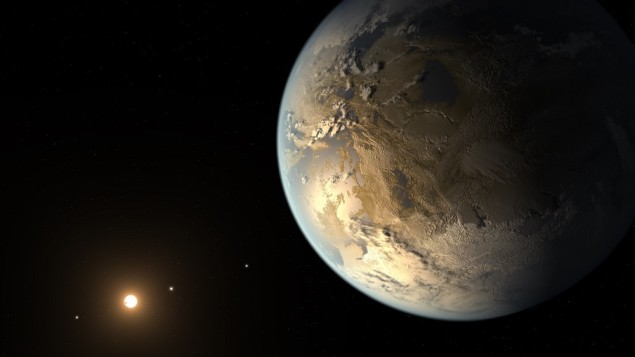NASA must fund major exoplanet mission top US scientists say
 Planet hunter: a panel of the National Academies of Sciences, Engineering, and Medicine has called for a dedicated spacecraft that would direct image Earth-like exoplanets (Courtesy: NASA/Ames/SETI Institute/JPL-Caltech)
Planet hunter: a panel of the National Academies of Sciences, Engineering, and Medicine has called for a dedicated spacecraft that would direct image Earth-like exoplanets (Courtesy: NASA/Ames/SETI Institute/JPL-Caltech)
NASA should design and launch a space mission capable of directly imaging rocky planets that orbit stars similar to the Sun. That is the main conclusion of a 203-page report issued on 5 September by a panel of the National Academies of Sciences, Engineering, and Medicine(NASEM). The report outlines two main goals for exoplanet research: a need to identify potentially habitable planets outside the solar system as well as gain a better understanding the formation and evolution of planetary systems.
Now is really the time to understand the formation and evolution of planetary systems as the products of star formationDavid Charbonneau
The report, commissioned by NASA, says that recently acquired knowledge about the frequency of small planets, as well as advances in optical technologies, “have significantly reduced uncertainties associated with a large direct imaging missions”. The 14-strong panel that wrote the report recommends that the new spacecraft should use a coronograph or starshade to enable the direct imaging of an exoplanet by blocking the light from parent stars. Indeed, the panel recommends that NASA should keep developing its Wide Field Infrared Survey Telescope, which is scheduled to launch in the mid-2020s and will demonstrate the technology behind the “coronographic spectroscopy” of exoplanets.
“Now is the time”
The report warns, however, that developing the necessary technology for a new mission would require a lot of investment over a long timescale. Work on the craft would also need a range of interdisciplinary expertise as well as collaboration with ground-based telescopes. Regarding such telescopes, it recommends that the National Science Foundation should invest in both the Giant Magellan Telescope and the proposed Thirty Meter Telescope to enable “profound advances” in the imaging and spectroscopy of entire planetary systems.READ MORE

“Now is really the time to understand the formation and evolution of planetary systems as the products of star formation,” notes Harvard University astronomer David Charbonneau, who co-chaired the NASEM panel. That view is backed by fellow co-chair Scott Gaudi from Ohio State University. “This is the first generation that, if we so choose, could go out and try to search for life and answer one of humankind’s most profound questions,” says Gaudi.
During a press briefing, Charbonneau and Gaudi also stressed the need to eliminate discrimination and harassment within astronomy that has hit the community in recent years and is also of increasing concern for junior scientists. “Many of the most exciting discoveries are being made by very young scientists as exoplanets is a very young field,” says Charbonneau. “We need the very best minds to approach the question: are we alone in the universe?”.
10/9/2018 FROM PHYSICSWORLD.COM
Δεν υπάρχουν σχόλια:
Δημοσίευση σχολίου